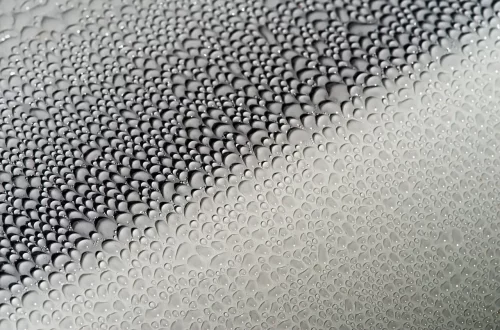
Choosing the Right Fecal Incontinence Pads for Comfort and Protection
Fecal incontinence is a condition that affects millions of people globally, yet it remains a topic often shrouded in stigma and silence. This condition varies in severity and can have a profound impact on an individual’s quality of life, affecting their emotional well-being and social interactions. For many, the fear of accidents can lead to isolation and anxiety, making it crucial to address both the physical and psychological aspects of living with fecal incontinence.
Finding the right products to manage this condition is essential to ensure comfort, protection, and confidence in daily activities. Among the various aids available, fecal incontinence pads have emerged as a practical solution that caters to diverse needs. Properly designed pads can offer significant benefits, including odor control, moisture-wicking properties, and a discreet appearance. However, with so many options on the market, selecting the most suitable pads can be a daunting task.
Understanding the unique requirements of each individual is vital in choosing the right fecal incontinence pads. Factors such as lifestyle, level of incontinence, and personal preferences play a crucial role in making an informed decision. This article aims to shed light on the essential considerations for selecting fecal incontinence pads that prioritize both comfort and protection.
Understanding Different Types of Fecal Incontinence Pads
When it comes to fecal incontinence pads, there is a wide variety of options available, each designed to meet different needs. Understanding the types of pads can significantly aid in making the right choice. Generally, fecal incontinence pads can be categorized into two main types: disposable and reusable.
Disposable pads are designed for single use and are convenient for those who prefer a hassle-free solution. They are often made from absorbent materials that lock away moisture and odors, providing a comfortable experience. Many disposable options come with adhesive strips to secure them in place, ensuring that they stay put during movement.
On the other hand, reusable pads are typically made from washable fabrics and can be used multiple times. They are environmentally friendly and can be more cost-effective in the long run. Reusable pads come in various shapes and sizes, allowing for personalization according to individual needs. Many of these pads are designed with moisture-wicking properties and are often softer than their disposable counterparts, enhancing comfort.
It is also essential to consider the absorbency level of the pads. Different brands offer varying levels of absorbency, catering to individuals with mild to severe incontinence. Selecting the right absorbency level is crucial for ensuring that the pad can adequately handle the specific needs of the user, thereby preventing leaks and discomfort.
In addition to absorbency, the fit of the pad is crucial for effective management. Pads come in various sizes and shapes, including those designed specifically for men and women. A proper fit will not only enhance comfort but also provide better protection against leaks. Therefore, it’s advisable to try different sizes and styles to find the perfect match.
Ultimately, understanding the types of fecal incontinence pads available is the first step in making an informed choice that aligns with individual preferences and needs.
Factors to Consider When Choosing Fecal Incontinence Pads
Selecting the right fecal incontinence pads involves several considerations that can significantly impact comfort and protection. One of the most critical factors is absorbency. Individuals experiencing varying levels of incontinence will have different absorbency needs. It’s essential to assess the severity of incontinence to choose a pad that can handle the situation effectively.
Another factor to consider is the material of the pads. Pads made from breathable fabrics will enhance comfort by allowing air circulation and reducing skin irritation. It’s advisable to look for pads that are hypoallergenic, especially for those with sensitive skin. This can prevent rashes and discomfort, contributing to overall well-being.
The design of the pad also plays a vital role in its effectiveness. Some pads come with features like leak barriers or contoured shapes that provide a better fit. These designs help in preventing leaks and ensuring that the pad remains in place during movement. Additionally, some pads are designed to be discreet, allowing users to wear them confidently without the fear of visible bulges or sounds.
Cost is another consideration. While disposable pads may seem convenient, the cost can add up over time, especially for individuals who require frequent changes. Reusable pads, while initially more expensive, can provide long-term savings. It’s essential to evaluate personal budgets and usage needs when making a decision.
Finally, seeking recommendations from healthcare providers or individuals experiencing similar challenges can provide valuable insights. Reading reviews and testimonials can also guide you in choosing the most suitable product. Ultimately, considering these factors will help in finding fecal incontinence pads that offer the best combination of comfort and protection.
Tips for Maintaining Comfort and Hygiene
Maintaining comfort and hygiene while using fecal incontinence pads is essential for overall well-being. Proper usage and care can significantly enhance the effectiveness of the pads while also preventing skin irritations and infections.
First and foremost, changing pads regularly is crucial. Depending on the absorbency level and individual needs, it is advisable to change pads at least every few hours or as soon as they become wet. This practice not only maintains hygiene but also prevents discomfort and skin irritation caused by prolonged exposure to moisture.
When changing pads, gentle cleansing of the skin is vital. Using mild, fragrance-free soaps and warm water can help maintain skin health. Avoiding harsh chemicals or scrubbing too hard can prevent skin damage. After cleansing, it’s essential to thoroughly dry the skin before applying a new pad. Keeping the area dry helps to prevent rashes and infections.
For those using reusable pads, proper washing and care are essential. Always follow the manufacturer’s instructions for washing to ensure longevity and effectiveness. It’s generally recommended to wash reusable pads in hot water with mild detergent and to avoid fabric softeners, as they can affect absorbency.
Additionally, wearing breathable clothing can enhance comfort. Loose-fitting garments allow for air circulation, reducing the risk of moisture buildup and irritation. Opting for cotton or moisture-wicking fabrics can also contribute to overall comfort.
Lastly, it’s important to monitor skin health regularly. Keeping an eye out for any signs of irritation, rashes, or infections can help catch potential issues early. If any concerns arise, consulting a healthcare professional is advisable.
By implementing these tips, individuals can maintain both comfort and hygiene while managing fecal incontinence, enhancing their quality of life.
**Disclaimer:** This article is for informational purposes only and does not constitute medical advice. For health concerns or medical conditions, please consult a qualified healthcare professional.




